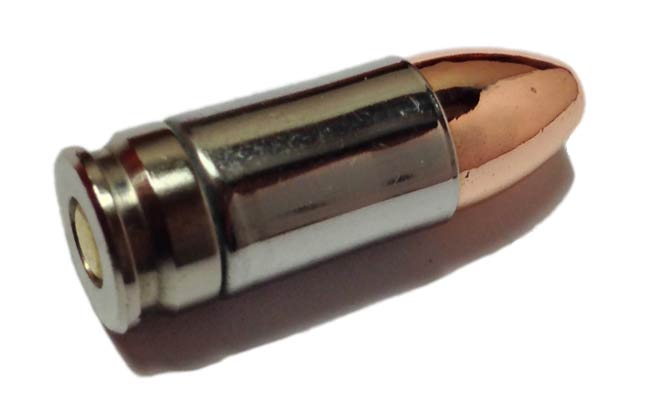Earlier this month, I posted an article about new 9mm cases that are being introduced by Shell Shock Technologies. The cases use a number of different approaches to manufacturing with the most obvious being the two piece construction.
There were a number of questions and comments to that article regarding various aspects of the cases. A representative of Shell Shock Technologies contacted me to clarify certain aspects of the product.
- Shell Shock will only manufacture cases – not loaded ammunition. Currently, the company is making 9mm cases with other pistol and rifle cases to follow during the next 12 months.
- Regarding the standard deviation tests mentioned in the prior article, those were performed by H.P. White – a respected independent laboratory. H.P. White used 10 handloaded rounds that used a Berry’s 124 grain bullet over 4.2 grains of Titegroup. Shell Shock cases were used with a Winchester small pistol primer. These were loaded on a Hornady Lock-n-Load single stage press. All testing was done in controlled lab conditions.
- The two parts of the Shell Shock case are joined with a high pressure compression joint using proprietary machinery.
- The 9mm Luger case was purposely designed for all semi-automatic and fully-automatic weapons so that the cylinder portion of the case is fully-seated/supported inside the breach to prevent swell or “bulging”. Shell Shock’s case design is especially useful when firing +P or +P+ rounds.
- Shell Shock cases are made from a flat sheet of material that allows the case to have a uniform case wall thickness. The case wall is thinner, but stronger, than standard brass cases. Consequently, the external dimensions are identical to other SAAMI spec cases, but the internal case volume is increased.
- Shell Shock cases will need special loading dies. These dies are the resizing and flaring dies. The Shell Shock resizing die should never be used with standard brass cases, while the flaring die will work with both kinds of cases. The dies use standard threading and have been tested to work with many presses including those from Hornady, Dillon and Lee.
- When you buy new Shell Shock cases, they are pre-sized and flared. All you need to do is seat a primer, drop the powder, place a bullet and crimp.
Regarding the H.P. White testing, Shell Shock stated:
Shell Shock does believe that the HP White’s test results fairly represent the capabilities of NAS3’s cutting edge design, quality of engineering and advanced production techniques. The message we were intending to communicate is NAS3 cases represent a combination of technologies that offer a better platform to house your loading recipe and, if Shell Shock can achieve such extraordinary results for hand-loaded ammunition under controlled laboratory conditions, you should expect to achieve improved results in the field.
Hopefully, this will help to answer some questions about these new cases. The dies and cases should be available next month (June 2016), so the shooting community can begin to experiment with them. The company stated it will be posting YouTube videos soon to demonstrate the loading process of these cases.
It is an interesting concept, and I certainly am happy to see when companies try new things. Ultimately, the market will determine if the design is successful. However, by pushing boundaries and branching out from the traditional ways of manufacturing all of us can potentially benefit.
 Your Privacy Choices
Your Privacy Choices
